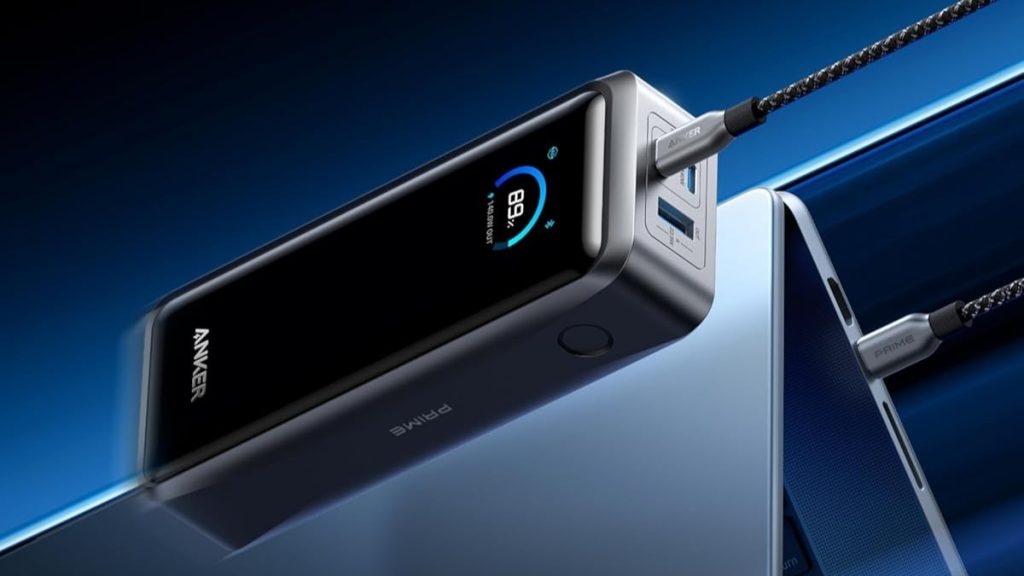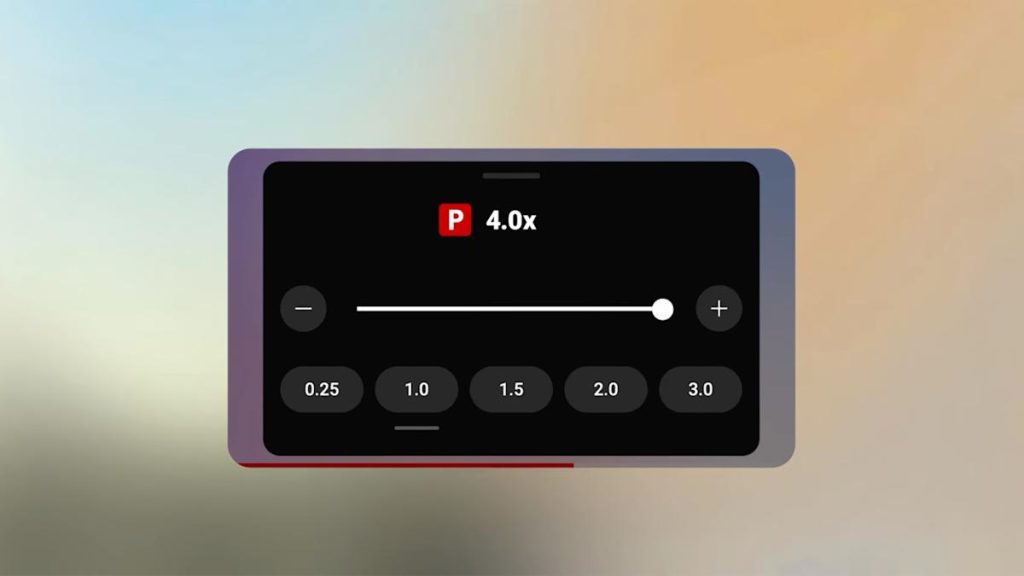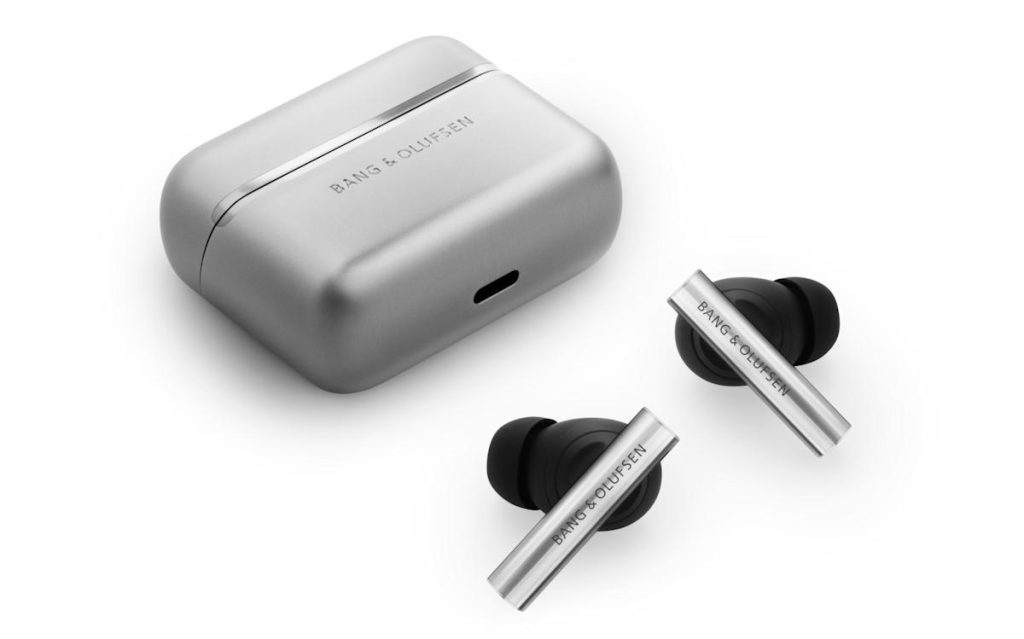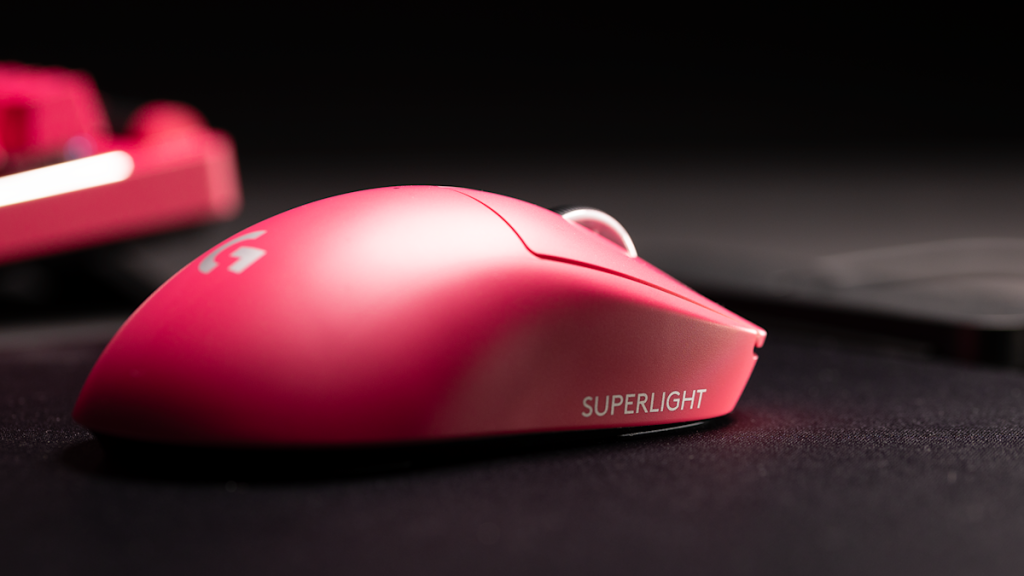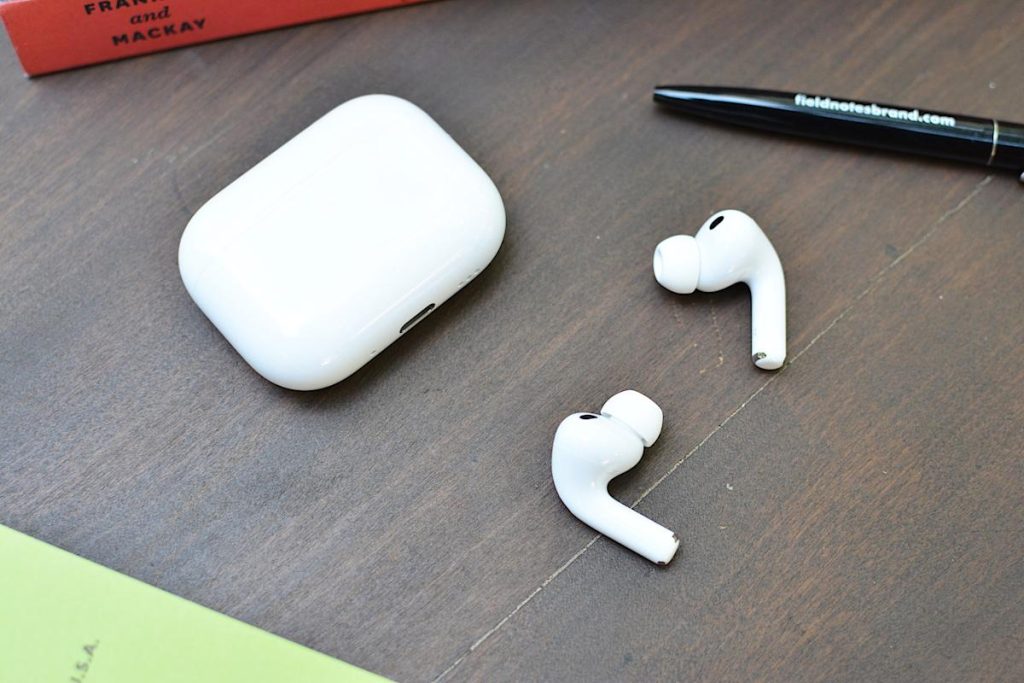The best earbuds for Android devices in 2025
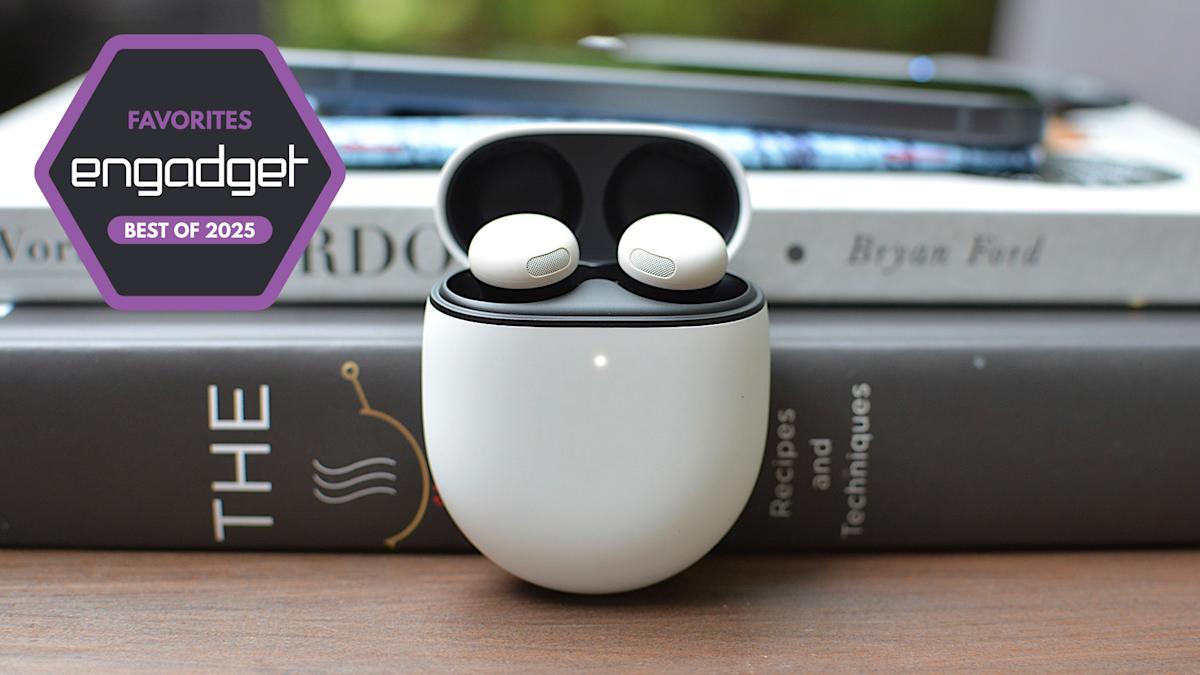
Deserved or not, Apple has turned AirPods into the default choice for most iPhone owners in the market for new wireless earbuds. But if you’re one of the millions who have an Android smartphone, figuring out which set to grab isn’t as obvious. If you need a hand, allow us to point you in the right direction. We’ve tested and reviewed dozens of wireless earbuds over the years and broken down our favorite options for Android users below. Whether you use a Galaxy or a Pixel phone, and whether you want something for the gym or your morning commute, here are the best AirPods alternatives for Android.
Table of contents
Best Android earbuds for 2025
Active noise cancellation: Yes | Wireless charging: Yes | Water resistance: IPX4 | Multipoint connectivity: Yes (2 devices) | Wear detection: Yes | Max battery life (rated): 12 hrs, 24 hrs w/ case | Codecs: SBC, AAC, LDAC, LC3 | Warranty: 1 year
Read our full Sony WF-1000XM5 review
The Sony WF-1000XM5 hit on just about everything we want from a premium set of Bluetooth earbuds. Their small, rounded design should feel comfortable and secure in most ears. They’re nearly unmatched at muting outside noise, thanks to a powerful ANC feature and memory foam eartips that do a remarkable job of isolating sound passively. They sound great out of the box, especially if you like a warmer profile with elevated bass, but you can easily customize the EQ curve through Sony’s app, and they do well to draw out treble-range detail either way. They’re also loaded with extra features, including multipoint connectivity, Google Fast Pair, LDAC and spatial audio support, the ability to swap between ANC and ambient sound (or “transparency”) modes automatically and more. The wireless charging case is conveniently tiny, while the eight- to 12-hour battery life gives little to complain about.
Still, the XM5s still aren’t a total slam dunk. The built-in mics aren’t the clearest for phone calls. The IPX4 water-resistance rating could be higher. Some people might find the memory foam eartips a little too full-feeling. They also have a list price of $330, which is far from affordable. But no other wireless earbuds we’ve tested have managed to tick so many boxes.
- Strong, customizable audio quality
- Should be comfortable to most
- Loads of handy bonus features
- Stellar noise isolation
- Expensive
- Memory foam eartips aren’t for everyone
- No battery life improvement over predecessor
Active noise cancellation: Yes | Wireless charging: Yes | Water resistance: IPX4 | Multipoint connectivity: Yes (2 devices) | Wear detection: No | Max battery life (rated): 10 hrs, 50 hrs w/ case | Codecs: SBC, AAC, LDAC | Warranty: 18 months
Read our guide to the best budget wireless earbuds
If you don’t have hundreds to spend, our favorite wireless earbuds in the budget bracket are the Anker Soundcore Space A40. Frequently priced between $45 and $60, this pair has the kind of features we’d expect from earbuds that cost twice as much: genuinely powerful ANC, multipoint connectivity, wireless charging, a solid eight to ten hours of battery life, LDAC support, decent (if not great) IPX4 water resistance and a usable ambient sound mode. They don’t have the most resolving or detail-rich sound of the box, unsurprisingly, but their warm profile offers pleasant, thumpy bass without totally blowing out the low-end. If you want to add more treble presence, you can customize the EQ through a clean and easy-to-read companion app. The actual earpieces are small, round and comfortable as well.
The main trade-off is call quality, as the built-in mic can lose your voice in noisy environments and doesn’t handle sibilant sounds very well. There’s no wear detection either, so your music won’t auto-pause when you remove an earbud. They also don’t support Google’s Fast Pair tech, though the earbuds should remember your device and automatically reconnect after you pair them for the first time. But for the price point, it’s hard to complain.
- Excellent ANC for the price
- Warm, pleasant sound
- Comfortable and compact
- Good battery life
- No automatic wear detection
- Mediocre call quality
- Doesn’t sound as detailed as higher-end options (as expected)
Active noise cancellation: Yes | Wireless charging: Yes | Water resistance: No IPX rating | Multipoint connectivity: Yes (2 devices) | Wear detection: No | Max battery life (rated): 7 hrs, 47 hrs w/ case | Codecs: SBC, AAC, LDAC, aptX Adaptive | Warranty: 1 year
Read our full Noble FoKus Rex5 review
Determining which set of headphones has the “best” sound quality is a fool’s errand — at the end of the day, it’ll always come down to personal taste. But if we had to pick one pair we’ve particularly enjoyed for music, it’d be the Noble FoKus Rex5. Its unique five-driver design helps it draw out a remarkable level of detail and properly separate the instrumentation in any given track. It’s a balanced sound profile, with tight but not overindulgent bass, a natural-sounding midrange and relaxed highs that don’t fatigue over time. The soundstage is wider than most true wireless earbuds we’ve tested, while support for LDAC and aptX Adaptive only assist with detail retrieval. You can set a personal EQ if you need it, but we’ve found the stock tuning to suit any genre well by default.
The FoKus Rex5 supports ANC and multipoint connectivity, while its IEM-style, metal-and-acrylic housing fits comfortably in the ear. But you’d buy it for the sound quality first and foremost: Noise cancellation isn’t on Sony’s level, the ultra-green finish isn’t for everyone, the five- to seven-hour battery life isn’t ideal and there’s no auto-pausing when you remove an earbud. Most prohibitively, these things are damn expensive at $449. If you want something a little less pricey, the Technics AZ100 and Bowers & Wilkins Pi8 are compelling (if bassier) options as well. But for self-proclaimed audiophiles with cash to burn, the FoKus Rex5 are a treat.
- Detailed, immersive sound
- Comfortable fit
- Custom audio profiles that save directly to the buds
- Very expensive
- Just one color and it’s not for everyone
- Subpar ANC performance
Active noise cancellation: Yes | Wireless charging: No | Water resistance: IPX4 | Multipoint connectivity: No | Wear detection: Yes | Max battery life (rated): 6 hrs, 24 hrs w/ case | Codecs: SBC, AAC | Warranty: 1 year
Read our full Beats Fit Pro review
Most of our picks above will work just fine in the gym, but if you’re buying a pair for workouts first and foremost, try the Beats Fit Pro. Yes, we’re recommending a set of Apple-made earbuds in an Android buying guide. But while they work best with iPhones, most of their AirPods-style features are also available on Android through the Beats app. You can pair them with one tap through a pop-up card, view a map with their last known location, swap between ANC and ambient sound modes from the home screen, remap controls and check their battery level from the notification tray. There’s no hi-res codec support, but in general the drop-off from iOS to Android isn’t nearly as great here as it is with AirPods.
The main reason we recommend the Fit Pro is their lightweight design, which is equipped with bendy silicone fins that keep the earbuds secure in place while you’re moving around. Their IPX4 water-resistance rating isn’t the best, but it should be enough for all but the sweatiest gymgoers. (Just don’t use them in the pool.) We also like that the Fit Pro uses physical buttons to adjust volume or skip tracks, since touch controls can feel finicky when you’re trying to keep up with a workout. Their punchy sound is well-suited to the gym as well, with a noticeable but not overwhelming push in the bass and treble. It’s not one for purists, but it’s energetic.
If you aren’t specifically looking for workout earbuds, you can still do better. The Fit Pro lack wireless charging and multipoint connectivity, and there’s no way to customize the EQ if you don’t like the default sound. Their built-in mics aren’t anything special for phone calls, and the five- to six-hour battery life is on the edge of passable. The charging case is somewhat large as well. Plus, while the ANC mode is useful enough for tamping down the noise of a gym, it’s a clear step down from the best options on the market.
- Secure fit for workouts
- Punchy sound is well-suited to the gym
- Physical control buttons
- No wireless charging or multipoint connectivity
- Battery life is just OK
- ANC isn’t fine but nothing special
Active noise cancellation: Yes | Wireless charging: Yes | Water resistance: IP54 (IPX4 for case) | Multipoint connectivity: Yes (2 devices) | Wear detection: Yes | Max battery life (rated): 12 hrs, 48 hrs w/ case | Codecs: SBC, AAC | Warranty: 1 year
Read our full Google Pixel Buds Pro 2 review
The Pixel Buds Pro 2 are explicitly designed to work in harmony with other Pixel devices, so they’re worth considering if you’re a dedicated fan of Google’s phones. They come with a host of useful bonus features, from remote ringing and a “conversation detection” mode to a customizable EQ and automatic switching between devices paired to your Google account. (You also get hands-free access to Google’s Gemini AI bot, though we wouldn’t call that essential.) You can still access most of the Pixel Buds’ perks on other Android devices by downloading a separate app, but all of the functionality is baked into Pixel phones natively. This means you can manage the earbuds, check battery status and the like right from your device’s settings menus. It’s similar to how Apple integrates AirPods with iOS.
The earbuds themselves are perfectly competent beyond that, with a tiny yet comfortable design, decent ANC for the price, eight-ish hours of battery life, adequate call quality and an enjoyable sound with punchy bass and extended treble. That said, you’ll still get richer audio quality and more robust noise cancellation from our Sony and Noble picks above, so those who aren’t all-in on Google hardware can feel free to look elsewhere.
- Tight integration with Pixel phones
- Tiny, comfy design
- Agreeable sound
- Smaller touch panels require precision
- ANC isn’t on par with Sony WF-1000XM5
Active noise cancellation: Yes | Wireless charging: Yes | Water resistance: IP57 | Multipoint connectivity: No | Wear detection: Yes | Max battery life (rated): 7 hrs, 30 hrs w/ case | Codecs: SBC, AAC, SSC, SSC-UHQ | Warranty: 1 year
Read our full Samsung Galaxy Buds 3 Pro review
Along those lines, the Samsung Galaxy Buds 3 Pro are to Galaxy phones what the Pixel Buds Pro 2 are to Pixel phones. Using them with a Samsung handset unlocks a few ecosystem-specific perks, including the hi-res Samsung Seamless codec, a real-time translation tool and a “Game Mode” that reduces latency. That’s on top of features like spatial audio, a graphic EQ, a lost device finder, adaptive ANC, simplified voice commands and automatic switching between Samsung devices.
This kind of walled garden approach is frustrating; remember when you could plug your headphones into any device and it’d work the same way every time? But, as with the Pixel Buds and AirPods, the Galaxy Buds 3 Pro are undeniably convenient if you’ve already bought into their chosen platform.
The rest of the package gets more right than wrong, though there are some issues worth calling out. The stem-style design pretty much rips off the AirPods Pro — this is particularly evident with the white finish — but adds weird, unnecessary LED strips down the stems. It’s comfortable, but Samsung isn’t beating the copycat allegations here. The ANC isn’t on par with the Sony XM5s either, and the six-hour battery life is shorter than many other premium pairs. There’s also no hi-res codec support with non-Samsung phones. On the plus side, the ambient sound mode works well. And most importantly, these things sound excellent out of the box, with full, meaty bass complemented by amply detailed highs and upper-mids.
It’s worth noting that Samsung froze shipments of the Galaxy Buds 3 Pro right around launch due to quality control concerns (mainly regarding the stock eartips), but those look to have been resolved, and we haven’t seen anything out of the ordinary with our review unit.
- Tight integration with Samsung phones
- Great audio quality
- Comfy fit
- Natural ambient sound
- Need a Samsung phone to get the most out of them
- Battery life is shorter than some rivals
- Copycat design with gimmicky LED lights
What to look for in wireless earbuds for Android devices
A selection of wireless earbuds sit organized in rows on a granite background.
(Photo by Jeff Dunn / Engadget)
For the most part, the features you want from a set of “Android earbuds” are the same as what you want from any headphones. Great sound quality, a comfortable fit and sufficient battery life are still the foundations. Adequate water resistance is good for workouts, and nobody wants a crummy mic for making calls. Once you approach the $100 range, features like active noise cancellation (ANC), wireless charging, an ambient sound mode (which lets you better hear outside noise without turning off your music) and multipoint connectivity (the ability to pair with multiple devices simultaneously) should be expected.
For Android devices specifically, there are a few extras to consider. A dedicated app that makes it easy to switch sound modes, customize the audio profile, locate your earbuds if they ever get misplaced or adjust other settings is strongly preferred. Features like Google Fast Pair or NFC-based pairing, which can help you avoid having to dig through your Bluetooth menu to connect your earbuds for the first time, are also nice perks. Some Android devices can also utilize higher-quality Bluetooth codecs such as aptX Adaptive or Sony’s LDAC — these aren’t nearly as important to audio quality as the actual architecture of your earbuds, but they can help wring out a little more detail if the buds are capable enough and you’re streaming lossless files. AptX Adaptive can also help reduce latency, which is good for streaming video or gaming.
Diversity is Android’s greatest strength, but it also means that some wireless earbuds play nicer with certain devices, typically those made by the same company. Recent Samsung earbuds, for instance, come with a few perks that are only available if you use a Galaxy phone. We have a couple of recommendations related to this idea above.
How we test Android earbuds
Sony WF-1000XM5 review
(Photo by Billy Steele/Engadget)
The best way to test earphones is simply to wear them as much as possible, so that’s what we do. We typically do this over a one- to two-week period, though embargo times occasionally force us to finish our review process a bit faster. We listen to a test playlist that includes several musical genres and podcasts, paying close attention to how each pair approaches the bass, mid and treble frequencies to get an accurate sense of its sound profile. We also test at high and low volumes to check for consistency in the tuning. We do not have access to a dummy head to take more objective measurements, but we’ll sometimes look to sites like Rtings, SoundGuys and others that do just to ensure our impressions are not wildly off-base. If a model supports custom EQ, we’ll tinker with that and use the available EQ presets to see if one sounds dramatically better than the others — though in general we base most of our impressions on the stock tuning each pair uses by default.
To assess microphone quality, we record our own audio samples and take multiple calls with a partner both indoors and outside. For battery life, we play our test playlist on a loop with the volume around 75 percent and measure how long it takes for each set to drain. Where applicable, we do a thorough review of a pair’s companion app and test each available feature. While comfort is ultimately subjective, we take note of how secure each pair feels while we’re on the move. We also use certain pairs in especially crowded public spaces to get a better sense of their passive and active noise cancellation, as well as their ability to maintain a consistent Bluetooth connection.
Recent updates
August 2025: We’ve taken another sweep to ensure our advice is still up-to-date.
May 2025: We’ve checked this guide to ensure our top picks still stand and noted a couple alternatives to the Noble Fokus Rex5, since that pair has had stock issues of late. We’re also keeping an eye on how the Trump administration’s tariff policy affects the pricing and stock of our recommendations (and the consumer tech industry as a whole). All of our picks are still available in their normal price ranges today, but we’ll update this guide if that changes.
February 2025: The Noble FoKus Rex5 is our new “best for sound quality” pick, replacing the Sennheiser Momentum True Wireless 4. Our other recommendations remain unchanged.
December 2024: We’ve lightly edited this guide for clarity and ensured that our current picks are still accurate.


